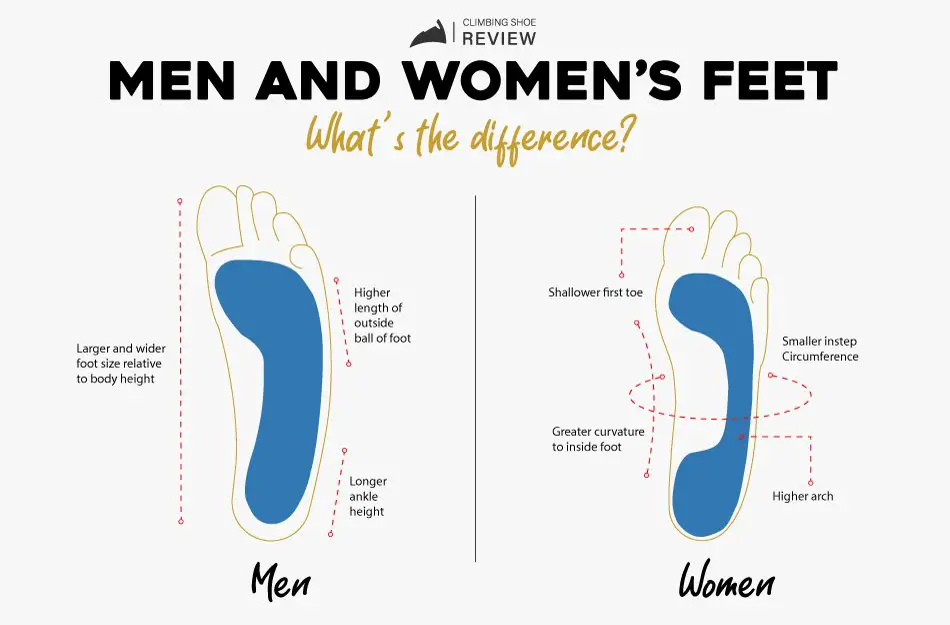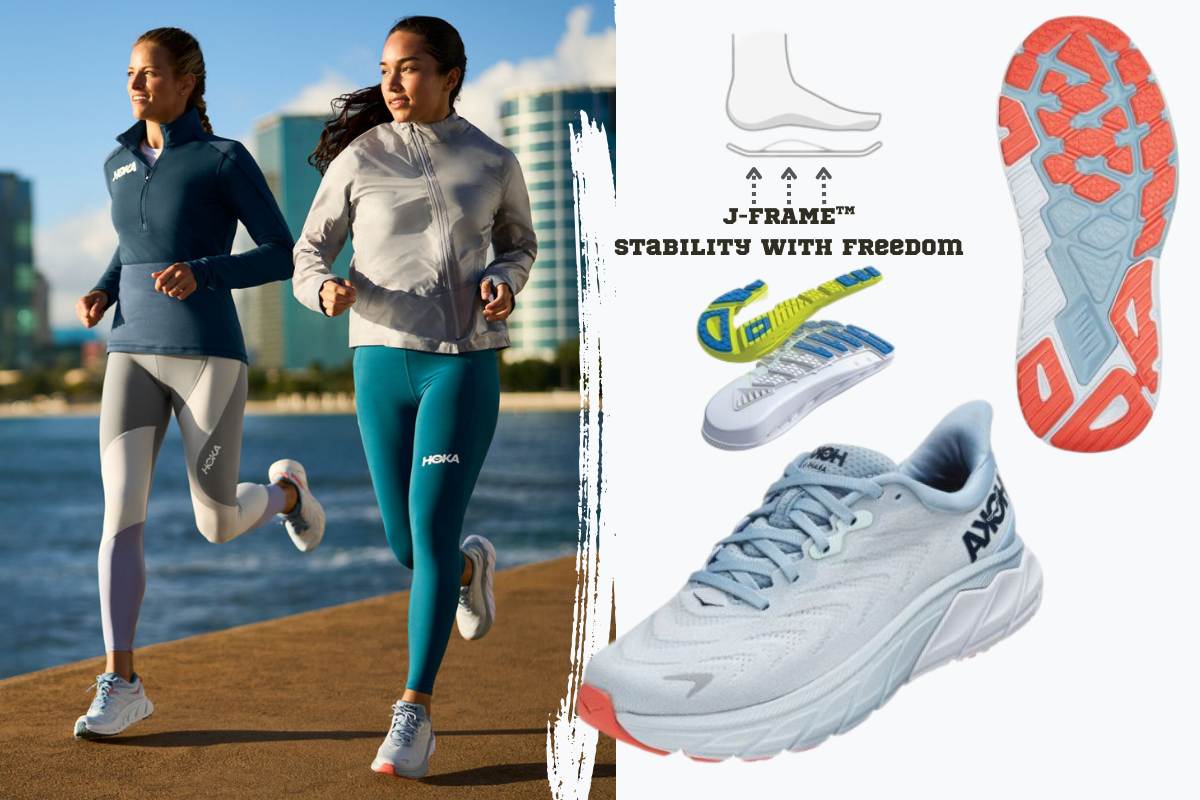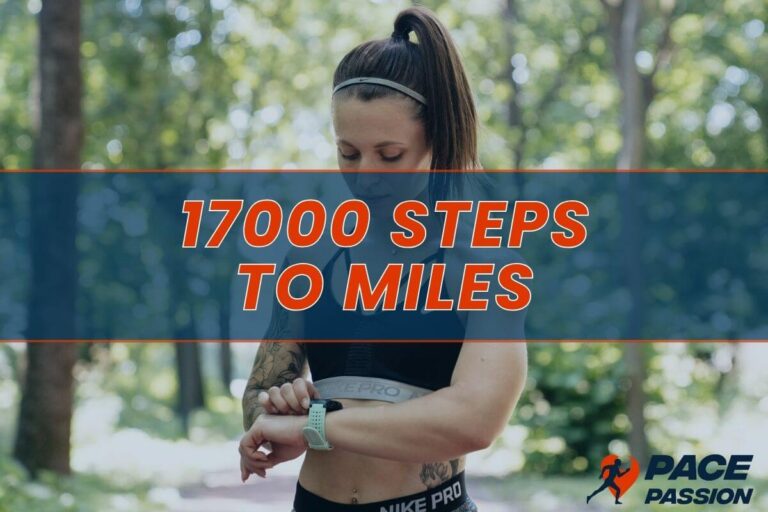Can Women Wear Men’s Running Shoes?
Are you a female runner who is frustrated from trying on running shoes but never finding the perfect fit? Have you ever wondered can women wear men’s running shoes? In this blog post, we explore whether or not women can wear men’s shoes comfortably and safely.
From essential factors to consider when choosing a shoe to tips on how to convert women’s shoe sizes into men’s, this guide has everything you need to know to help you decide.
So, can females wear men’s shoes? Let’s find out!
How can women wear men’s running shoes?
Wondering how to wear men’s shoes as a woman? When selecting the right athletic shoe, it is important that they fit properly, regardless of whether you purchase a men’s or women’s model. Women can increase their options for running shoes by looking beyond the traditional women’s section for larger sizes, better quality materials, and varied color options.
Why Are Running Shoes Divided by Gender?
Running shoes are designed specifically to meet the demands of runners’ anatomy, providing improved performance and injury prevention.

Gender-Specific Anatomical Differences
Women and men are built differently, including in their musculoskeletal systems. The bones, muscles, ligaments, and tendons of female runners differ from those of male runners in specific ways that can affect running mechanics.
For example, women’s stride length tends to be shorter than men’s because they tend to have a lower center of gravity. They have wider hips and their feet point more outward when compared with the average bodies of most male athletes.
Additionally, women have a greater tendency for excessive pronation, as well as an increased need for support under their arches. Gait patterns vary between genders, too. Female runners generally produce less impact force upon landing and make up for this by taking shorter strides.
Meeting the Specific Needs of Male and Female Runners
Men typically have a wider forefoot, as well as larger and longer toes than women, which means that their shoes need to be roomier in the toe box area.
Women’s feet also tend to pronate more when they run, so shoe manufacturers create running shoes for women with extra arch support and cushioning for better stability. Designers also take into account different weight distribution from the heel to the toes, as well as varying techniques of gait (walking or running).
What Is the Difference Between Men’s and Women’s Running Shoes?
Women’s and men’s running shoes can vary in size, fit, cushioning, weight, and flexibility to meet the specific anatomical needs of their bodies.
1. Fit and Width Variations
Women’s running shoes tend to be narrower than men’s shoes. Sometimes women find that most women’s shoes feel too snug or narrow and prefer men’s wider width labeled “D.” In addition, the heels of men’s running shoes are generally wider than women’s because they need more room for their larger heel bones.
Women typically have narrow heels, so their shoes need to provide more cushioning and support than men’s shoes.
2. Cushioning and Support
The differences between men’s and women’s running shoes go beyond just size, and cushioning and support are particularly significant.
Most cushioning materials used in running shoes either use traditional EVA foam or next-generation foams that cater more towards men’s longer strides. They may not be as suitable for lighter female runners, who naturally land with less force. On the other hand, men wearing women’s running shoes often won’t get enough cushioning for good shock absorption.
3. Weight and Flexibility
Runners need comfortable shoes that are lightweight, but that also have enough stability to support them during a run. Men’s running shoes tend to be heavier than those designed for women, due to the fact that men generally weigh more and have larger feet.
Both genders require flexibility in their shoes in order to ensure freedom of movement while still providing adequate support.
Can Women Wear Men’s Running Shoes?
Female runners can wear men’s shoes, but they should consider several factors in order to make sure they purchase comfortable products. Here are the main benefits of male running shoes for female runners:

1. Availability of Larger Sizes
Some women find that women’s shoes are too tight, and thus have to size up to accommodate their wider feet. Extra-large sizes are often hard to find in women’s shoe models, but men’s running shoes can offer a good alternative. By exploring men’s sizes, they may be able to find shoes that accommodate the size of their feet, providing a comfortable running experience.
2. More Options in Terms of Style and Color
Women can increase their options for running shoes by looking beyond the traditional women’s section. This may come as a surprise to many, but some brands don’t design their running shoes differently for women and men. Sometimes the only difference is in the color scheme of the shoes, which means that shopping in the men’s section can provide women with more color options.
3. Potential for Better Cushioning and Support
Men’s running shoes typically feature thicker materials under the midsole, which provide additional cushioning and firmer foam for enhanced responsiveness. They also often have a different heel drop, making them more efficient than standard women’s running shoes (which encourage runners to land harder with every stride).
3 Types of Women’s Running Shoes
Women have a variety of shoes to choose from. Here are the main types of women’s running shoes.
1. Cushioned Shoes
Cushioned running shoes provide added comfort and safety for women who engage in regular physical activity. Cushioning absorbs energy at the foot-to-ground interface, allowing for more efficient movement with less fatigue and injury risk.

Cushioned running shoes can help reduce impact to the joints by providing a softer surface to land on, which also assists in preventing pain and discomfort while running.

Pro Tip:
However, it is important to find a balance between cushioning and support when choosing a shoe, as excessive cushioning can be deceptive and may not actually reduce joint impact.
2. Stability Shoes
Stability shoes are one of the top choices for women runners who require extra support. They typically have elements that control pronation and include guide rails for motion control.
They also offer maximum arch support, slip-resistance, and comfort.

3. Minimalist/Barefoot Shoes
These shoes provide a more comfortable fit while promoting healthy foot activities and mechanics. They’re designed to let your feet move, flex, and experience their full range of motion rather than relying solely on excess cushioning for comfort.

Compared to other kinds of traditional running shoes, minimalist footwear may help runners achieve better biomechanics, creating less stress along the entire body.

Pro Tip:
This kind of shoe provides little cushioning or support, so it is important to ensure proper technique if you decide to try them out. This can help runners avoid injury by allowing for gradual adjustment, speed, and balance when running over longer distances or different terrain.
Men’s vs. Women’s Running Shoes
Let’s summarize the pros and cons of women choosing men’s running shoes.
Pros for Women of Running in Men’s Running Shoes
A major advantage to wearing men’s running shoes is they can offer more durability and support than women’s athletic shoes. Men’s shoes tend to be constructed with more durable materials, designed for a heavier user than many of their female counterparts.
In some cases, this may mean men’s running shoes are made from higher-grade rubber on the heel, which provides greater wear resistance and shock absorption.
Men’s styles often provide larger sizes, which makes them a good choice when one needs extra width or length not offered by traditional ladies’ shoes.
Cons for Women of Running in Men’s Running Shoes
Due to the anatomical differences between genders, there are several potential drawbacks for women running in men’s shoes. Most notably, men’s shoes often lack the correct form of cushioning and support that female runners need.
In addition, since female feet tend to be narrower than those of males, sizes may not fit perfectly. Also, some male-specific shoes can cause discomfort on a woman’s foot due to incorrect arch placement or heel cup size.
Subscribe to Our Running Newsletter!
Get free running tips from renowned professional athletes and discounts from top-notch brands.
How to Convert Women’s Shoe Size to Men’s
Converting men’s and women’s shoe sizes to find the perfect fit can be a tricky task. In general, when it comes to running shoes, women’s shoe sizes are typically 1.5 sizes smaller than men’s in the USA.
So, for example, if a woman wears a size 8, then she would need to look for men’s size 6.5 running shoes. If a man has a size 8, this would equate to a 9.5 in women’s shoes. However, there may be variation between different brands, so it is worth familiarizing yourself with the sizing conversion charts of specific brands when choosing your next pair of running shoes.
Generally speaking, manufacturers use different production techniques to create men’s and women’s shoes. This can affect a brand’s sizing formula, depending how much cushioning is included in a model.
Can a Woman Wear Men’s Adidas Shoes?
Yes, women can comfortably wear men’s Adidas running shoes. Some of the advantages of doing so include the fact that they are available in larger sizes than a typical women’s shoe, and that they provide more options for style and color selections compared to most female-focused models. They also often have better cushioning and support than what is offered in traditional female models.
Here is the Adidas running shoe sizing chart for men and women
| Inches | US Men’s | US Women’s |
|---|---|---|
| 8.7 | 4 | 5 |
| 8.9 | 4.5 | 5.5 |
| 9.0 | 5 | 6 |
| 9.2 | 5.5 | 6.5 |
| 9.4 | 6 | 7 |
| 9.5 | 6.5 | 7.5 |
| 9.7 | 7 | 8 |
| 9.8 | 7.5 | 8.5 |
| 10.0 | 8 | 9 |
| 10.2 | 8.5 | 9.5 |
| 10.4 | 9 | 10 |
| 10.5 | 9.5 | 10.5 |
| 10.7 | 10 | 11 |
| 10.9 | 10.5 | 11.5 |
| 11.0 | 11 | 12 |
| 11.2 | 11.5 | 12.5 |
| 11.3 | 12 | 13 |
| 11.5 | 12.5 | 13.5 |
| 11.7 | 13 | 14 |
| 11.9 | 13.5 | 14.5 |
| 12.0 | 14 | 15 |
| 12.2 | 14.5 | 15.5 |
| 12.4 | 15 | N/A |
As you can see, women’s models are just one size larger than men’s shoes.
Can Women Wear Men’s Brooks Shoes?
Women can certainly wear men’s Brooks shoes for running. Some of their shoe sizes are unisex, meaning that sizes match across genders. However, many forms of running shoes may need to account for gender-specific anatomical differences, such as a foot’s width and height, in order to offer maximum safety and comfort.
Here’s a table showing the men’s and women’s size chart for Brooks running shoes
| Inches | US Men’s | US Women’s |
|---|---|---|
| 8.66 | 3.5 | 5 |
| 8.86 | 4 | 5.5 |
| 9.06 | 4.5 | 6 |
| 9.25 | 5 | 6.5 |
| 9.45 | 5.5 | 7 |
| 9.65 | 6 | 7.5 |
| 9.84 | 6.5 | 8 |
| 9.96 | 7 | 8.5 |
| 10.04 | 7.5 | 9 |
| 10.24 | 8 | 9.5 |
| 10.43 | 8.5 | 10 |
| 10.63 | 9 | 10.5 |
| 10.83 | 9.5 | 11 |
| 11.02 | 10 | 11.5 |
| 11.22 | 10.5 | 12 |
| 11.42 | 11 | 12.5 |
| 11.61 | 11.5 | 13 |
| 11.81 | 12 | N/A |
| 12.01 | 12.5 | N/A |
| 12.2 | 13 | N/A |
| 12.6 | 14 | N/A |
| 12.99 | 15 | N/A |
| 13.39 | 16 | N/A |
Women’s shoes in Brooks generally run 1.5 sizes bigger than the same style in men’s.
Can Women Wear Men’s Nike Sneakers?
Yes, women can wear men’s Nike sneakers for running. Many of Nike’s designs are unisex, making it easier for both men and women to find shoes suitable for their needs.
Here’s the size chart for Nike running shoes for women and men
| Inches | US Men’s | US Women’s |
|---|---|---|
| 8.27 | N/A | 4 |
| 8.46 | N/A | 4.5 |
| 8.66 | N/A | 5 |
| 8.86 | N/A | 5.5 |
| 9.06 | N/A | 6 |
| 9.25 | N/A | 6.5 |
| 9.45 | N/A | 7 |
| 9.65 | 6.5 | 7.5 |
| 9.84 | 7 | 8 |
| 10.04 | 7.5 | 8.5 |
| 10.24 | 8 | 9 |
| 10.43 | 8.5 | 9.5 |
| 10.63 | 9 | 10 |
| 10.83 | 9.5 | 10.5 |
| 11.02 | 10 | 11 |
| 11.22 | 10.5 | 11.5 |
| 11.42 | 11 | 12 |
| 11.61 | 11.5 | 12.5 |
| 11.81 | 12 | 13 |
| 12.01 | 12.5 | N/A |
| 12.2 | 13 | N/A |
| 12.4 | 13.5 | N/A |
| 12.6 | 14 | N/A |
| 12.8 | 14.5 | N/A |
| 12.99 | 15 | N/A |
| 13.19 | 15.5 | N/A |
| 13.39 | 16 | N/A |
Women’s Nike running shoes are generally 1 size larger than men’s shoes.
Can a Woman Wear Men’s ASICS Sneakers?
Yes, women can wear men’s ASICS sneakers, as long as they find the right fit. Men with narrower feet may even find women’s ASICS sneakers more comfortable. To help determine the correct shoe size for both genders, here is the ASICS size chart:
| Inches | US Men’s | US Women’s |
|---|---|---|
| 8.66 | N/A | 5 |
| 8.86 | 4 | 5.5 |
| 9.06 | 4.5 | 6 |
| 9.25 | 5 | 6.5 |
| 9.45 | 5.5 | 7 |
| 9.65 | 6 | 7.5 |
| 9.84 | 6.5 | 8 |
| 9.96 | 7 | 8.5 |
| 10.04 | 7.5 | 9 |
| 10.24 | 8 | 9.5 |
| 10.43 | 8.5 | 10 |
| 10.63 | 9 | 10.5 |
| 10.83 | 9.5 | 11 |
| 11.02 | 10 | 11.5 |
| 11.14 | 10.5 | 12 |
| 11.22 | 11 | 12.5 |
| 11.42 | 11.5 | 13 |
| 11.61 | 12 | 13.5 |
| 11.81 | 12.5 | N/A |
| 12.01 | 13 | N/A |
| 12.2 | 14 | N/A |
| 12.6 | 15 | N/A |
| 12.99 | 16 | N/A |
| 13.39 | 17 | N/A |
Women’s ASICS usually run 1.5 sizes larger than the same style in men’s.
3 Key Tips for Women When Buying Men’s Running Shoes
Following these 3 tips can make it easier to identify suitable men’s running shoes for women.
1. Choosing the Correct Size
Finding the appropriate running shoe size is key when it comes to having a comfortable and enjoyable running experience. Ill-fitting shoes can lead to blistering, discomfort, poor performance, and potential injury.

Pro Tip:
To measure your foot size, stand up with both feet together, preferably after some activity, because your feet may swell during the day. This tip will help you avoid buying running shoes that are too small.
2. Trying on and Testing Shoes
Trying on men’s running shoes before making a purchase can help you make an informed decision when you shop for new footwear. This helps determine if they provide adequate support, cushioning, and stability to meet your specific needs as a runner.
3. Considerations for Specific Foot Needs
Every foot is different. Some may be larger than average, while others may need arch support or heel cushioning.
Knowing your own specific foot needs will help you find the best pair of shoes. Whether your feet are flat or high arched, narrow or wide, having a shoe that provides the right amount of support can reduce pain and prevent new injuries.
Frequently Asked Questions About How to Wear Men’s Shoes as a Woman
Can Women Buy Men’s Shoes for Running?
Women can definitely buy men’s shoes for running. In fact, some women find that wearing men’s running shoes helps them feel more comfortable and supported while on the move.
Can Women Wear Men’s Hokas?
Yes, women can benefit from wearing men’s Hoka running shoes, if they find a pair that fits perfectly.
Are Men’s Running Shoes Wider Than Women’s?
Men’s running shoes are generally wider than women’s due to differences in foot anatomy. Women tend to have narrower heels and forefoot sections than men, on average.
Final Thoughts on Men’s vs. Women’s Running Shoes
When it comes to running shoes, finding the right fit and support for your individual needs is essential. Men and women’s running shoes have some differences, such as fit, width, cushioning, and weight, but this does not mean that they can’t be used by either gender.
Women can choose to wear men’s running shoes if they feel more comfortable doing so. What is important is finding a shoe that fits well and provides good support and durability.
Have you ever tried wearing men’s shoes for running? Please share your experience in the comments below.
Also Read:
- Is Walking 6 Miles a Day Good
- How To Prevent Cramps While Running
- Why Do My Ankles Hurt When I Run
- Advantages and Disadvantages of Fartlek Training
- Why Do My Lungs Burn When I Run
- Runners Toenails Falling Off
- Is Running Safe After a Knee Replacement
- How Many Steps in 3 Miles
- Best Running Shoes for Bunions
References:
- Born to Run: Understanding Women’s Running Shoes https://www.asics.com/za/en-za/blog/article/born-to-run-understanding-women%27s-running-shoes
- Ramsey CA, et al. Factors Influencing Runner’s Choices of Footwear. Front Sports Act Living. 2022 Mar 31;4:829514 https://www.frontiersin.org/articles/10.3389/fspor.2022.829514/full
- Malisoux L, et al. Can the “Appropriate” Footwear Prevent Injury in Leisure-Time Running? Evidence Versus Beliefs. J Athl Train. 2020;55(12):1215-1223 https://meridian.allenpress.com/jat/article/55/12/1215/446284/Can-the-Appropriate-Footwear-Prevent-Injury-in
- Gillinov SM, et al. Effect of Minimalist Footwear on Running Efficiency: A Randomized Crossover Trial. Sports Health. 2015;7(3):256-260 https://www.ncbi.nlm.nih.gov/pmc/articles/PMC4482302/
- Men’s to Women’s Shoe Size | Quick Conversion https://www.blitzresults.com/en/shoe-size-men/
If you have any questions or suggestions, you can contact us via email – [email protected]






